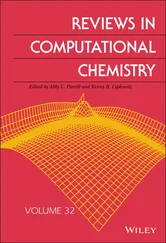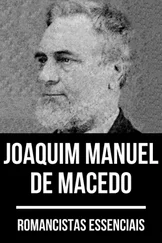If we thus define the total stress σby its components σ ijusing indicial notation, these are determined by summing the appropriate forces in the i ‐direction on the projection, or cuts, d x j(or d x , d y , and d z in conventional notation). The surfaces of cuts are shown for two kinds of porous material structure in Figure 1.3and include the total area of the porous skeleton.
In the context of the finite element computation, we shall frequently use a vectorial notation for stresses, writing
(1.1a) 
or
(1.1b) 
This notation reduces the components to six rather than nine and has some computational merit.
Now if the stress in the solid skeleton is defined as the effective stress σ′ again over the whole cross sectional area, then the hydrostatic stress due to the pore pressure, p acting, only on the pore area should be
(1.2) 
where n is the porosity and δ ijis the Kronecker delta. The negative sign is introduced as it is a general convention to take tensile components of stress as positive.
The above, plausible, argument leads to the following relation between total and effective stress with total stress
(1.3) 
or if the vectorial notation is used, we have
(1.4) 
where mis a vector written as
(1.5) 
The above arguments do not stand the test of experiment as it would appear that, with values of porosity n with a magnitude of 0.1–0.2, it would be possible to damage a specimen of a porous material (such as concrete, for instance) by subjecting it to external and internal pressures simultaneously. Further, it would appear from Equation (1.3)that the strength of the material would be always influenced by the pressure p .
Fillunger introduced the concepts implicit in ( 1.3) in 1913 but despite conducting experiments in 1915 on the tensile strength of concrete subject to water pressure in the pores, which gave the correct answers, he was not willing to depart from the simple statements made above.
It was the work of Terzaghi and Rendulic (1934) and by Terzaghi (1936) which finally modified the definition of effective stress to
(1.6) 
where n wis now called the effective area coefficient and is such that
(1.7) 
Much further experimentation on such porous solids as the concrete had to be performed before the above statement was generally accepted. Here the work of Leliavsky (1947), McHenry (1948), and Serafim (1954, 1964) made important contributions by experiments and arguments showing that it is more rational to take sections for determining the pore water effect through arbitrary surfaces with minimum contact points.
Bishop (1959) and Skempton (1960) analyzed the historical perspective and, more recently, de Boer (1996) and de Boer et al. (1996) addressed the same problem showing how an acrimonious debate between Fillunger and Terzaghi terminated in the tragic suicide of the former in 1937.
Zienkiewicz (1947, 1963) found that interpretation of the various experiments was not always convincing. However, the work of Biot (1941, 1955, 1956a, 1956b, 1962) and Biot and Willis (1957) clarified many concepts in the interpretation of effective stress and indeed of the coupled fluid and solid interaction. In the following section, we shall present a somewhat different argument leading to Equations (1.6)and ( 1.7).
If the quantity σ′ of ( 1.3) and ( 1.4) is interpreted as the volume‐averaged solid stress (1 − n ) t sused in the mixture theory (partial stress), see Gray et al. (2009), then we recover the stress split introduced in Biot (1955). There the fluid pressure, as opposed to the effective stress concept, is weighted by the porosity. Biot (1955) declares that “the remaining components of the stress tensor are the forces applied to that portion of the cube faces occupied by the solid.” In this book, we use the much more common concept of effective stress.
1.3.2 An Alternative Approach to Effective Stress
Let us now consider the effect of the simultaneous application of a total external hydrostatic stress and a pore pressure change, both equal to Δ p , to any porous material. The above requirement can be written in tensorial notation as requiring that the total stress increment is defined as
(1.8a) 
or, using the vector notation
(1.8b) 
In the above, the negative sign is introduced since “pressures” are generally defined as being positive in compression, while it is convenient to define stress components as positive in tension.
It is evident that for the loading mentioned, only a very uniform and small volumetric strain will occur in the skeleton and the material will not suffer any damage provided that the grains of the solid are all made of identical material. This is simply because all parts of the porous medium solid component will be subjected to identical compressive stress.
However, if the microstructure of the porous medium is composed of different materials, it appears possible that nonuniform, localized stresses, can occur and that local grain damage may be suffered. Experiments performed on many soils and rocks and rock‐like materials show, however, that such effects are insignificant. Thus, in general, the grains and, hence, the total material will be in a state of pure volumetric strain
(1.9) 
where K sis the average material bulk modulus of the solid components of the skeleton. Alternatively, adopting a vectorial notation for strain in a manner involved in (1.1)
(1.10a) 
where εis the vector defining the strains in the manner corresponding to that of stress increment definition. Again, assuming that the material is isotropic, we shall have
Читать дальше
























